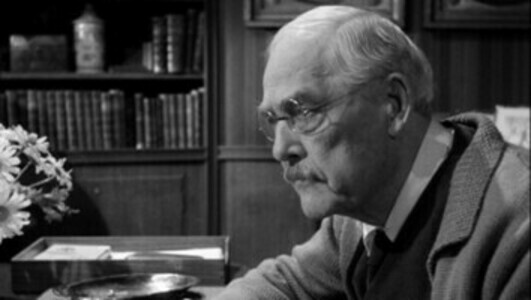The process of verifying the authenticity of miraculous stories has evolved through centuries of scholarship, debate, and exploration. Historical steps have ranged from early theological discussions to modern interdisciplinary research, each contributing to a deeper understanding of religious texts and their claims.
Here is a comprehensive timeline highlighting significant steps in this process:
1. Early Christian and Jewish Interpretations (1st - 4th Century CE):
In the earliest days of Christianity and Judaism, religious leaders and scholars focused on preserving and interpreting sacred texts. The early Church Fathers, such as Origen and Augustine, engaged in debates about the meaning of miracles and their place in Christian doctrine. Their work laid the foundation for later theological exploration.
2. Councils and Creeds (4th - 6th Century CE):
The First Council of Nicaea (325 CE) and subsequent councils, such as the Council of Chalcedon (451 CE), played a crucial role in defining Christian orthodoxy. These councils addressed doctrinal issues, including the nature of miracles, and sought to establish a unified understanding of Christian teachings.
3. Medieval Scholasticism (12th - 14th Century CE):
Scholastic theologians like Thomas Aquinas applied rigorous philosophical and logical analysis to theological questions. Aquinas’s works, such as the Summa Theologica, attempted to reconcile faith with reason, including discussions on the nature of miracles and their role in divine revelation.
4. Renaissance and Reformation (16th Century CE):
The Renaissance revival of classical learning and the Protestant Reformation brought new perspectives on religious texts. Reformers like Martin Luther and John Calvin emphasized sola scriptura (scripture alone) and critiqued certain traditions, including miraculous claims, which led to increased scrutiny and debate.
5. Enlightenment and Rationalism (17th - 18th Century CE):
The Enlightenment brought a focus on reason, empirical evidence, and critical analysis. Thinkers like Voltaire and David Hume questioned the historical and logical basis of miracles. This period saw a growing emphasis on historical criticism and the challenge to accept miraculous events at face value.
6. Modern Archaeology and Historical Criticism (19th - 20th Century CE):
The development of modern archaeology and historical criticism provided new tools for examining biblical texts. Scholars like William Albright and Julius Wellhausen used archaeological discoveries and textual analysis to assess the historical context of biblical events, including miracles.
7. Contemporary Scholarship and Interdisciplinary Approaches (21st Century CE):
Today’s scholars employ a range of methods, including textual criticism, comparative religion, and scientific analysis, to study religious texts. Researchers examine the historical, cultural, and literary contexts of miraculous accounts and seek to understand their significance within their respective religious traditions.
The quest to verify the authenticity of religious stories, including miraculous events reported in the Bible and other sacred texts, has involved a complex interplay of historical, archaeological, theological, and textual scholarship.
Whether one views these stories as literal truths or symbolic teachings often depends on personal beliefs and interpretive frameworks.
Setting personal beliefs aside, when evaluating the authenticity and historical reliability of religious stories, several key logical arguments are prioritized.
Here is a prioritized list of the key logical arguments:
Textual Consistency: Examines whether the accounts of miraculous events are consistent within the text itself and with other contemporary sources. This includes checking for contradictions or changes in the narrative over time.
Historical Context: Evaluates the historical and cultural context in which the miracles are reported to have occurred. Understanding the social, political, and cultural backdrop can provide insights into whether the accounts reflect actual historical events or are shaped by the context.
Archaeological Evidence: Considers physical evidence from archaeological findings that can either corroborate or contradict the events described in the religious texts. Archaeological discoveries can provide tangible proof or disproof of the historical accuracy of the accounts.
External Corroboration: Looks for independent accounts from other historical sources or documents that support or refute the miraculous events described. This involves checking if other contemporary writers or historians mentioned or corroborated the events.
Comparative Analysis: Compares the miraculous accounts with similar stories from other cultures and religions. This helps to identify common themes and motifs, potentially indicating whether these stories are unique or part of a broader tradition.
Internal Consistency: Assesses whether the narratives are internally consistent and coherent. Stories that have logical flaws or inconsistencies may be viewed as less credible.
Witness Testimony: Evaluates the reliability and credibility of the witnesses reported in the texts. This involves examining the sources of the testimony and their proximity to the events described.
Historical Criticism: Applies critical methodologies to analyze the texts' historical reliability, including examining their origins, authorship, and transmission. This approach seeks to understand the development and changes in the text over time.
Theological Bias: Considers whether the accounts were written or revised with theological motivations. Understanding potential biases can help to assess whether the miracles were intended to support specific religious doctrines or beliefs.
Logical Plausibility: Assesses whether the reported miracles are logically and scientifically plausible. This involves analyzing whether the events described could reasonably occur according to known natural laws and scientific understanding.
These key arguments help scholars and researchers analyze the reliability and authenticity of miraculous accounts and contribute to an understanding of religious texts.

